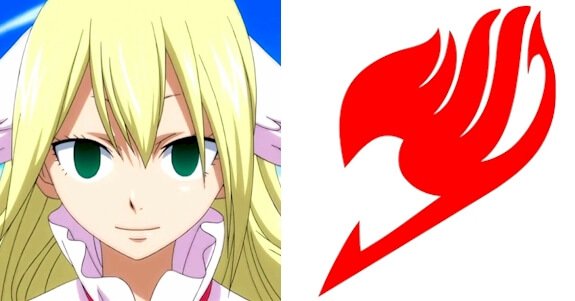Let’s explore the Fairy Tail logo and the history of the TV series.
“Do fairies have a tail? Do they even exist these days? Like them, this place is a mystery… A never-ending adventure,” _ Makarov about the true meaning of Fairy Tail in “Now We’re Even.”
The above quote ushers readers into the world of mysteries and adventures. It also uncovers the puzzle around fairies. The Japanese manga, Fairy Tail, comprises 545 chapters published into 63 tankōbon volumes. It was born on 26th August 2006.
The story revolves around Natsu, a mage who sets out to find his foster father in the Kingdom of Fiore. This Kingdom is on the southern coast of Magnolia Town—a mercantile city where magic thrives. Hiro Mashima is the author of this amusing piece of literary work.
The manga series did not come alone. It came with a namesake logo called a fairy. This emblem comprises three graphic elements. They include lettering, an abstract figure, and colors. Red, orange, white, and black are the colors chosen to convey the mystical feel of the trademark.
The orange figure attached to the wordmark has had diverse meanings. From bird to arrow and dragon to fairy, fans continue to express their views. Regardless of these opinions, the emblem is the face of one of the best-selling manga series worldwide.
Fairy Tail has over 72 million copies in print by the close of February 2020. The emblem is attractive, simple, and rare, allowing it to dance on any marketing medium.
Evolution of Fairy Tail’s Logo

Hiro Mashima and his team of creative workers do not see the need to update their idol emblem. Since 2006, the colorful logo with magical powers has remained the same. It has more to offer curious readers, so let’s explore it further.
2006—Now:
In December 2006, the Fairy Tail logo appeared in the Shōnen Weekly Magazine. It featured a mystic icon in front of a magical wordmark. While the icon appeared in orange, the wordmark came in red with black and white outlines. This visual asset is part of the fictional story that hits sixty–three volumes. Since its outdooring, the colorful emblem has remained unchanged. In 2009, an anime series of the exact name started airing.
What Font Is the Fairy Tail Logo?
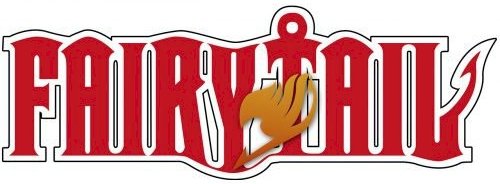
From all indications, the Fairy Tail logo is captured in a custom typeface. Each letter looked like it was drawn instead of written. This portrays the Japanese style of writing. Crown Title is the closest font used for the logo. Jonathan Paterson is credited for creating this unique font.
Who Designed Fairy Tail’s Logo?
No one is directly credited as the designer of the mystic Fairy Tail emblem. However, it wouldn’t be a mistake to name Hiro Mashima as the designer. Most people across the world regard him as the author of Fairy Tail, the Japanese manga series. So there is a link between the logo creation and the storyline. He received the Kodansha Manga Award in 2009.
Why Does Fairy Tail Logo Work?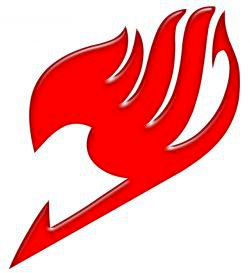
1. The Fairy Tail Logo Is Unique
Every logo designer would agree that Fairy Tail’s emblem is uncommon. It’s unlike any logo design in history. It shares no resemblance with any logotype in the movie industry or outside of it. The trademark stands tall with its unusual graphic elements. It’s mystically exceptional.
2. The Fairy Tail Logo Is Simple:
The Fairy Tail’s emblem holds simplicity at heart. With colors aside, it boasts of only two weird design elements. With these fewer features, the logo is clean with no messy emotions. So people can quickly identify the emblem on any channel.
3. The Logo Is Memorable:

Well-crafted logos stand the test of time. The Fairy Tail’s logo hasn’t changed in the past fifteen years. It has kept its graphic elements for over a decade. This consistency has won several admirers. Also, its modesty and weird personality make it easy for fans to recall.
4. The Logo Is Versatile:
An emblem designed with cleanliness in mind would scale. The Fairy Tail’s logo can scale effortlessly on multiple mediums because it has a minimalist layout. This attractive emblem doesn’t have detailed graphic features to hinder its adaptability.
5. The Logo Is Readable:
Readability is an essential requirement you should never compromise. The Fairy Tail’s logo nearly failed the test here. The font choice almost ruins the personality of the design. Yet, when you watch closely, it’s readable and meaningful. This evokes its supernatural vibes.
Fairy Tail Logo Design Elements
The author of Fairy Tail wrote and published a story on magic. He extended this myth into his logo design. He did this by using a wordmark, symbol, and colors with mystical emotions. To further understand these graphic elements, let’s take them one after the other.
Fairy Tail Logo Shape And Symbol
The Magical Hand:
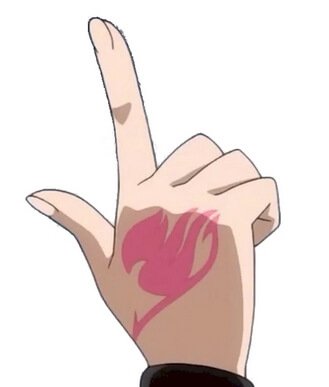
Some things are difficult to make out. This is because they are often shrewd in mysteries. We can say the same about the Fairy Tail symbol. It’s the signature tattoo that identifies members of the guild. This unusual symbol looks like a moving arrow with a flaming tail.
From another angle, it appears as a dragon in flight. These two insights add to the mystery. With an artistic eye, the abstract figure looks like a hand symbol. To reveal the sign, your backhand should face the audience. After that, close the thumb and index figure but keep the rest open.
You can’t go wrong with an account given in the series. The mysterious figure is linked to a dancing fairy with a tail. Makarov Dreyar, a guild master, revealed this to Lucy Heartfilia. This orange icon stands for adventure and the unknown. And it’s a fair reflection of the mages’ endless quest into the unknown world.
Fairy Tail Logo Colors
1. Red Color:
Red is a warm hue. It paints the inscription of the logo. This primary-color is associated with love, desire, energy, and passion. As an attention-grabbing color, it makes it easier for people to recognize the monogram from a distance. Red can also evoke anger, danger, revenge, and violence. These emotions are typically shown in the manga series.
2. Orange Color:
Orange is another warm color you can find in the logo. It dresses the figure that has sparked many debates. I’m referring to the iconic hand symbol. It’s a secondary color that aligns with optimism and social communication. This hue is associated with youth, creativity, and enthusiasm. From a negative standpoint, it exudes impatience, domination, and superficiality.
3. Black Color:
A mystery is about the unknown, hidden, and darkness. And black is the most suitable color for evoking these secret emotions. Though subtle in the trademark, it enhances its outline. This neutral hue is linked with elegance, power, and strength. In contrast, it can represent evil, death, and mystery. This is another reflective color of the fictional series.
4. White Color:
Just like the black, white forms the outline of the emblem. It features between the black line and the red wordmark. This neutral hue is a color of perfection. Its symbolism includes purity, clarity, and goodness. Despite the violence shown in the series, there are enough virtues portrayed. And the white color represents these positive emotions perfectly well.
Who Started Fairy Tail?

Though very young, Hiro Mashima took creative art inspiration from his dad before he joined his ancestors. This formed the basis of his interest in writing and illustration. Hiro Mashima was born in Nagana, Japan, on 3rd May 1977. He thrived under his caring grandfather.
His granddad loved collecting discarded manga. Hiro would then read and draw the characters from these mangas. After high school, he pursued this passion in another school that specializes in teaching manga students. Thinking the school can’t help him grow professionally, he left.
In 1998, with the help of some manga editors, Hiro Mashima won a competition he entered. Shortly, he unveiled the Rave Master series. It was printed in the Japanese weekly magazine, Shōnen from 1999 to 2005. This maiden series shot him to fame and success.
From 2001 to 2002, the series was adapted into an anime entitled Groove Adventure Rave. From 2006 to 2017, he published Fairy Tail in the same magazine. Most fans and critics believe this is his best-selling work. Also, it’s one of the best–selling manga series with over 72 copies in print.
In 2009, following the success of Fairy Tail, Hiro Mashima received the Kodansha Manga Award. His recognition continued in 2017 when he got the Harvey Awards. This prestigious award was followed by the Angouleme’s Special Award in France in 2018.
Besides his late father, Hiro has taken inspiration from Dragon Ball, Dragon Quest, and Miyazaki. Others include Kinnikumna, Code Geass, and Berserk. It’s exciting to know how Hiro named his main characters after the seasons of the weather.
You’ll find names like Haru, Natsu, Aki, and Fuyu representing the heroes in his adventurous series. In English, these relate to spring, summer, autumn, and winter, respectively. He did the same in Monster Hunter Orage, where he named a character Shiki. This means seasons.
Do Natsu And Lucy Kiss?
Hiro Mashima, the creator of Fairy Tail, was having fun on social media. He wanted to show his fans how to draw two people kissing. He picked Natsu and Lucy, perhaps two of his favorite characters. Hiro drew the couple looking intimate in an embracing posture. The image showed Lucy with eyes closed and Natsu ready to steal a kiss. However, that was the end of the drama.
Do Fairies Have Tail?
Fairies are mythical beings or creatures portrayed in folklore as having supernatural powers. These creatures can be helpful, mischievous, and dangerous. No one really knows for sure if these creatures exist, let alone having tails. The tail added to the fairy in the manga series stands for the eternal mystery and never-ending adventure ahead of the guild members.
What Does the Fairy Tail Symbol Mean?
The Fairy Tail symbol is an identity given to each member. It comes as a tattoo and forms part of the tradition. Though it looks like other perceived creatures, it’s truly a fairy with a tail. It symbolizes the mystery and adventures awaiting each member of the guild as they explore.
Who Is the Strongest Girl In Fairy Tail?
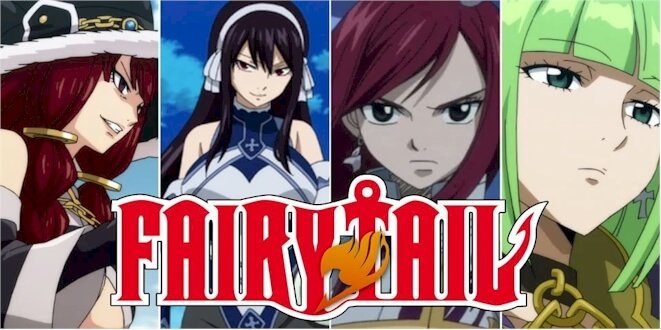
This is tricky because all the girls have incredible powers. There are Erza, Irene, Lucy, Minerva, and Mirajane. Others include Kagura, Brandish, Juvia, Wendy, and Ultear. These ladies have unique strengths that combine to bring victories. But when pushed to the wall, I’ll vouch for Erza. Arguably the strongest girl who can change to various armors using her magic.
Brief History On Fairy Tail Series
The epic caption—Fairy Tail was coined from the words—fairy tail. This was done to highlight the uniqueness of the series and its magical orange figure. Hiro Mashima wrote and illustrated it as a Japanese manga series. It contains 545 chapters drawn into 63 volumes.
Shōnen Weekly Magazine serialized it from August 2006 to July 2017. The story captures the adventures of a dragon slayer, Natsu Dragneel. Natsu’s mission was to find his foster father, the Dragon Igneel. While traveling with Happy, they met another mage, Lucy Heartfilia.
This manga series was staged on Earth Land, a world where magic rules. This fictional world harbors giants, demons, humans, dragons, and other mythical races. There are four powerful magic spells in the series. These are the fairy law, fairy glitter, fairy sphere, and the fairy heart.
Unlike the first three, the fairy heart is the most powerful and secretly kept magic spell. Along with these spells are guilds. These guilds aim to receive and distribute jobs to their members. Legal, dark, and independent are the three guilds existing within this mystical world.
Amusingly, there is a body that controls the guilds. It comprises the mages who form the Magic Council. They work under the king and his governors. The series featured about 100 members. The primary characters are:
1. Natsu Dragneel
2. Happy
3. Lucy Heartfilia
4. Gray Fullbuster
5. Scarlet Erza
The manga series has been adapted and circulated in other entertaining formats. For instance, you can find its anime series, video games, movies, and spin-offs. Dentsu Entertainment, A–1 Pictures, and Satelight are some media houses that produced anime series from the manga series.
In June 2010, Konami Examu Games Inc. released an action video game entitled “Fairy Tail: Portable Guild.” After this came other exciting video games from different developers, they include Game Samba, Gust Co. Limited, and Koei Tecmo.
Del Rey Manga gained the license to circulate the English version in North America. Shortly, Kodansha USA bought the rights after Del Rey Manga closed down. In May 2011, they started publishing the volumes. Finally, they published the 63rd volume on 23rd January 2018.
Australia, New Zealand, and the UK got their licenses. Penguin Books Australia captured the Australian and New Zealand audiences. Turnaround Publisher Services took over the UK market. With 72 million volumes in motion, Fairy Tail is one of the best manga series out there.
My Final Remarks On Fairy Tail
Fairies transcend boundaries. They can be found in most cultures across the world. These mythical beings are depicted with supernatural powers that keep humans fascinated by their existence. Like storytellers before him, Hiro Mashima shared his creative talent with the world.
He authored his version of fairies in a manga entitled Fairy Tail. Both critics and fans regard his manga as one of the best. He centered his story on a wizard called Natsu. In a quest to find his adoptive dad, other magicians joined Natsu. You’ll find Happy and Lucy, among others.
In creating the Fairy Tail logo for the series, the author took the same magical path. Its trademark symbolizes myths, adventures, and discoveries. Both artworks complement each other. If you’re a reader, kindly get the publication. Go for the motion pictures if you’re a visual enthusiast.

